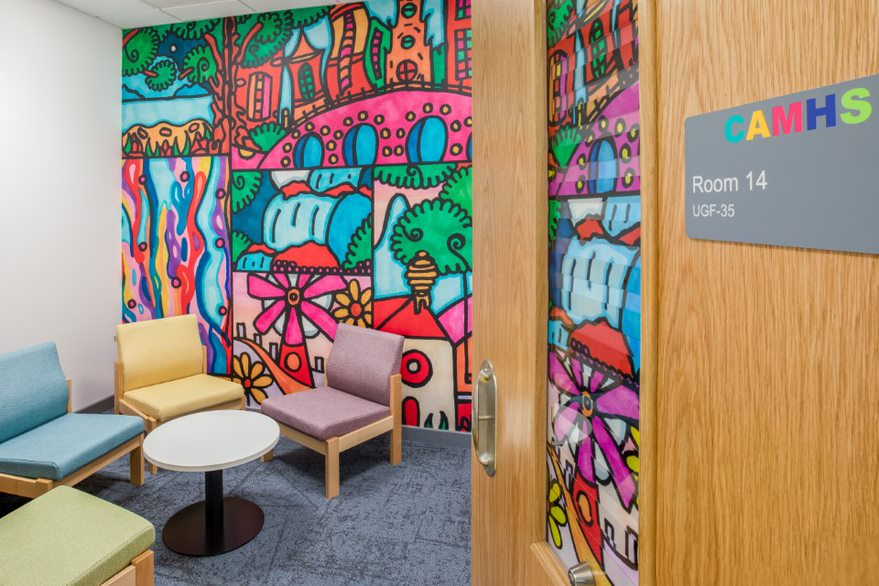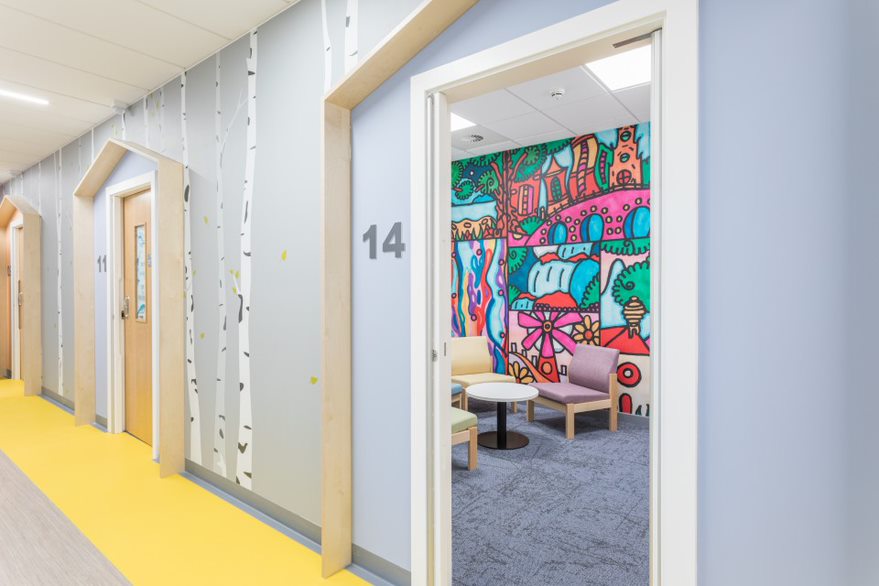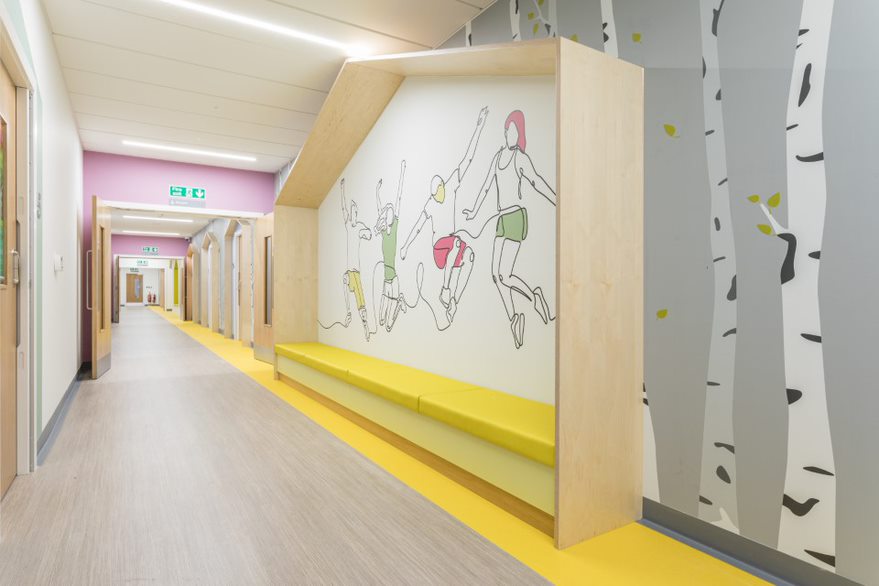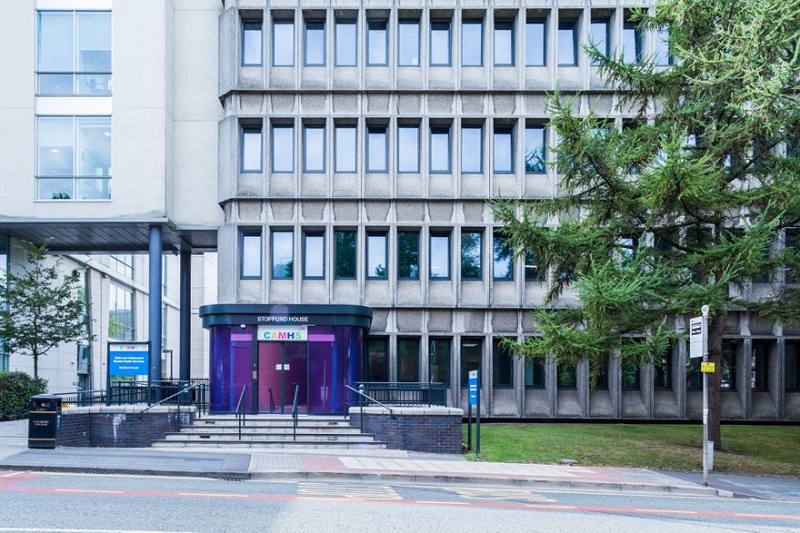
FWP-designed CAMHS unit in Stockport designed in conjunction with staff and service users
Stakeholder engagement has been central to the design of a new child and adolescent mental health service (CAMHS) facility in Stockport.
Delivered by FWP for Pennine Care NHS Foundation Trust, the £1.4m unit has opened in Stopford House in the centre of Stockport and is part of a wider refurbishment of the building for Stockport Council.
It will provide a wide range of mental health services to children and young people with conditions such as anxiety, autism, depression, psychosis, self harm, ADHD, and ASD.
Clinical teams and service users and their families were heavily involved in the design of the building, with the resulting unit providing a modern and bright environment that includes 18 themed rooms.

Each room has a graphical image depicting its theme on the door and inside a unique design on the walls, chosen by the children and young people the service supports.
These themes include waterfalls, Dr Who, orangutans, space, elephants, music, and mountains.
There is also a large tropical island-themed room for art and group therapy.
Creating interest
Outside, the approach to the building provides a clear, bright, identifiable entrance with strong signage and graphics.
Once inside, there is a reception area far detached from the typical CAMHS or clinical environment with a modern look that includes a slatted timber and moss wall.
The centre provides a safe space for patients and staff and has been designed to lower anxiety, create interest, and not to be too complex or confusing.
And all design elements known to be beneficial for people with neurodiversity conditions have been put into practice.
For example, signage is easy to read and understand, and soft colours have been used throughout.
The creation of a state-of-the-art facility in an existing 1960s building forming such an exciting interior space that will enhance and encourage wellbeing in both patient and staff has been hugely important to us all
In addition, a secure corridor space where the therapy rooms are located has been widened to lower anxiety and has open spaces with built-in seating areas, feature timber-slatted walls, graphic walls, and plenty of colour.
For staff, early consultations with administration and clinical teams resulted in open-plan office areas with desking systems set up to enable collaborative working.
Virtual meeting pods and touch-down acoustically-treated meeting spaces have also been created and there is a chillout space and library where staff can relax.
David Simmons, FWP senior associate, said: “Our approach was to create a journey from start to finish for the service user that is modern, exciting, and encompasses design for a wide variety of age groups.
Designing for everyone
“We did this by taking on board all information learnt from service users and clinical workshops, together with the latest available information on neurodiversity design.
“All the themes for the room were created and decided upon by the service users themselves; one room was even created by a service user applying their amazing artwork to a full digital image wall.
“The result is testament to all the hard work the CAMHS team, estates, and our own FWP team have dedicated to this project.


“The creation of a state-of-the-art facility in an existing 1960s building forming such an exciting interior space that will enhance and encourage wellbeing in both patient and staff has been hugely important to us all.”
To improve sustainability and lower energy costs, a new air source heat pump has replaced the old heating system and double-glazed windows and LED lighting have been installed.
Sarah Leah, Pennine Care’s associate director of operations for CAMHS, said: “We have created a leading mental health environment for children and young people.
“The building has been transformed into a unique, light, bright welcoming space and the feedback we’ve had so far from our families and staff has been amazing.”